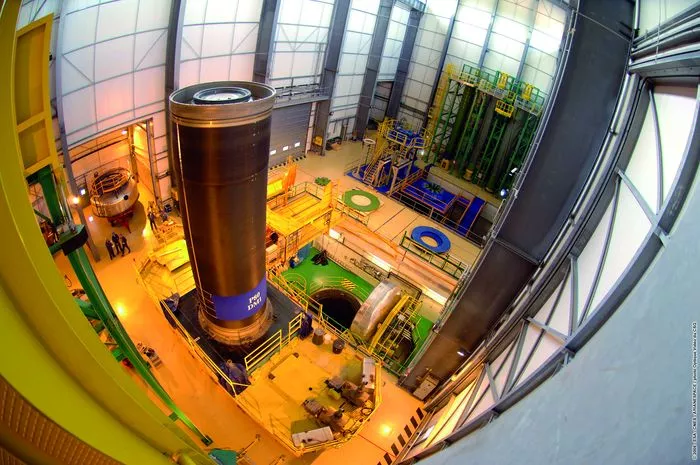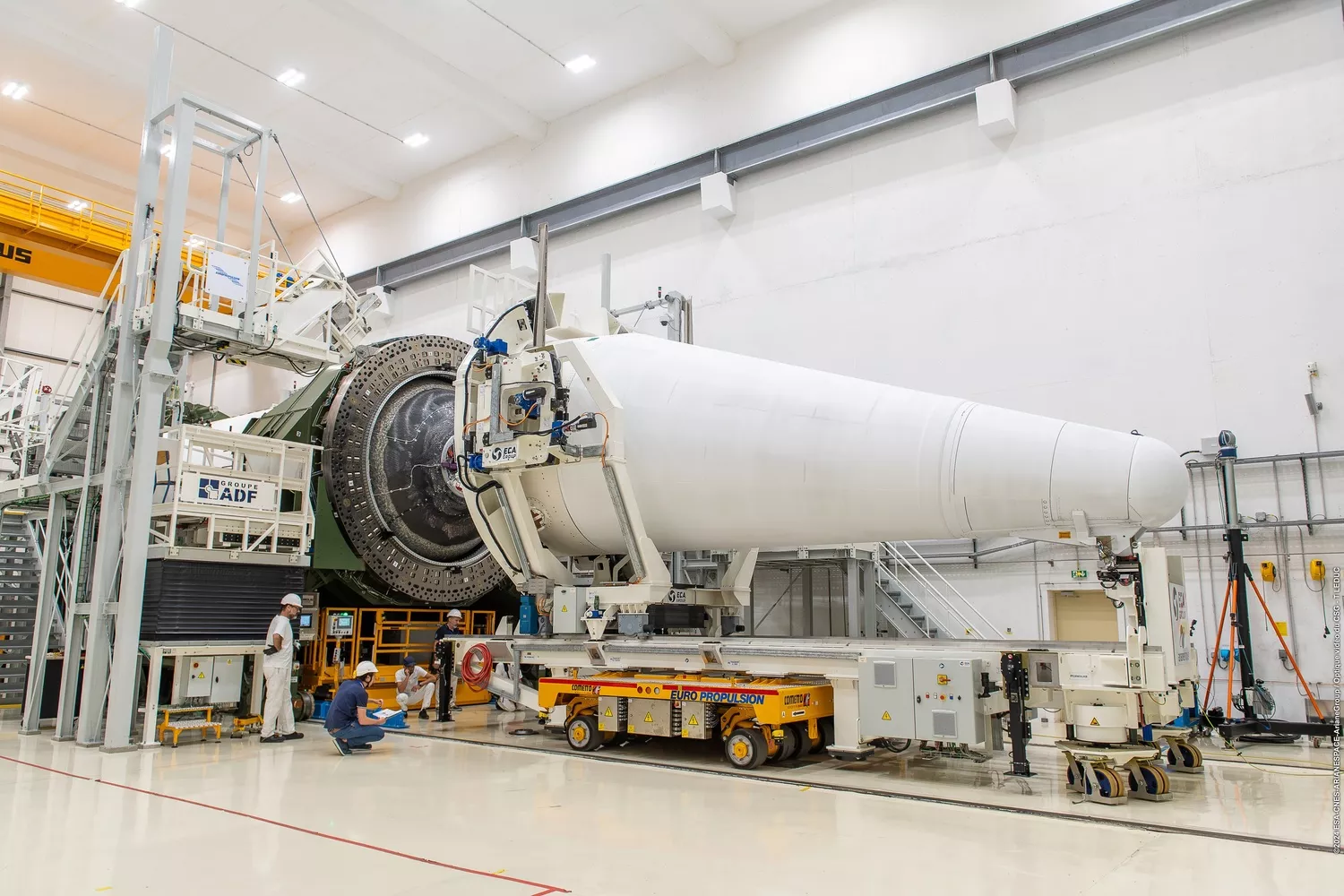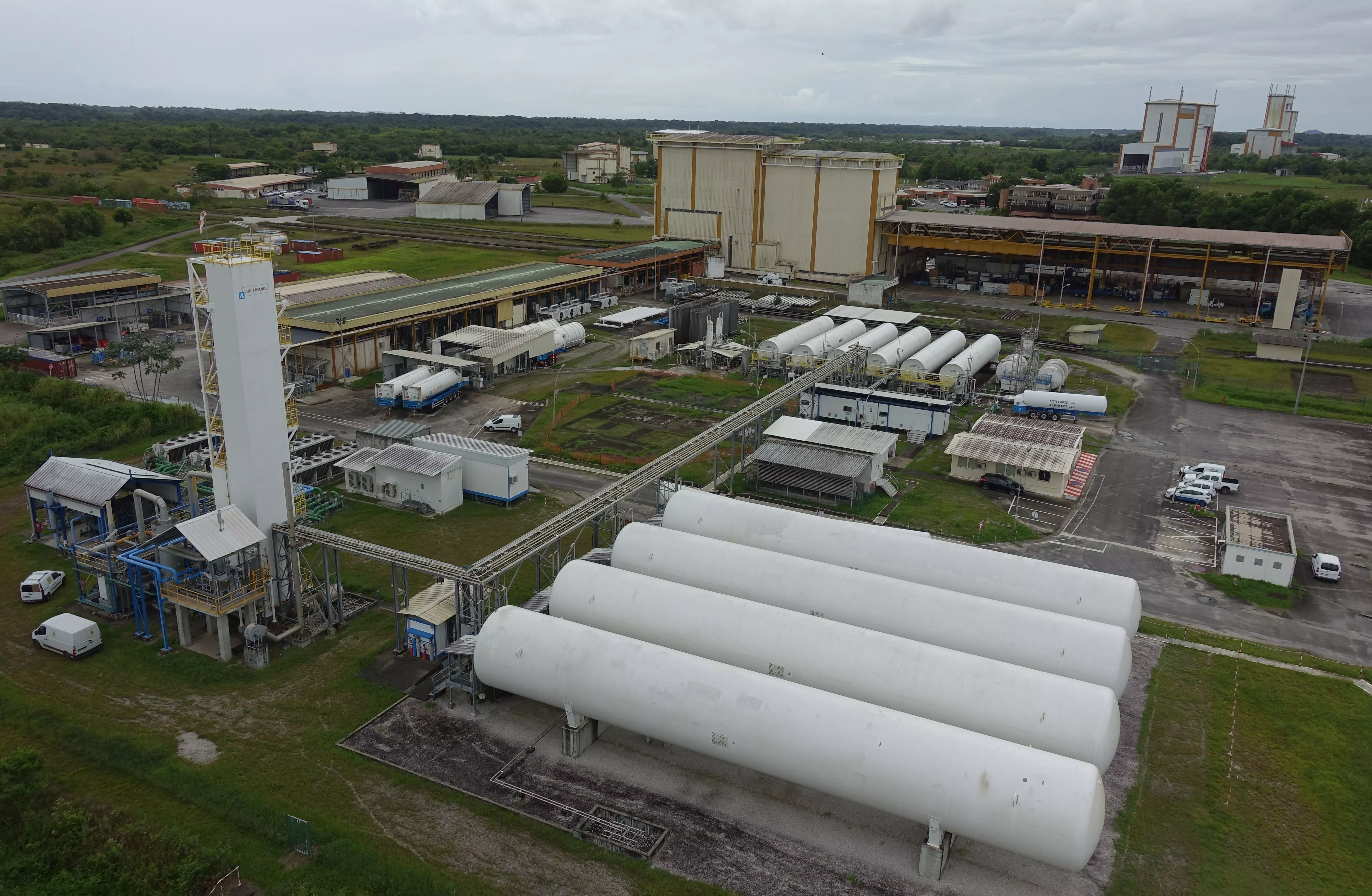Production Plants
Although most of the launcher components are produced in Europe, some, such as the solid propellant rocket motors — used as boosters for Ariane 6 or as the 1st stage for Vega-C — are manufactured at Europe’s spaceport. The plants at Europe’s spaceport also produce the various liquid propellants used as launcher fuel, as well as other gases and fluids essential for preparing a launch.
Rocket Motors Production
Some components of the Ariane 6 and Vega-C launchers are manufactured at Europe’s spaceport: they include the renowned solid propellant rocket motors, which are needed for the launcher’s thrust at lift-off. Depending on its configuration, Ariane 6 has two or four of these boosters, which are attached to the launcher's main stage. Vega-C uses just one, which constitutes its first stage. This rocket motor, the P120C, is loaded with 142 tonnes of solid propellant. Its upgraded version, the P160C, will contain 157 tonnes.
Europe’s spaceport has a fully fledged industrial centre for the production of solid propellant rocket motors. Spanning 300 hectares, this "booster zone" comprises the four sites involved in manufacturing, preparing and storing the boosters: the The French Guiana Solid Propellant Plant, the Booster Integration Building, the Booster Finishing Facility and the Booster Storage Building.
This area also houses the infrastructure used to test and validate new versions of boosters before they enter series production: the Solid-propellant rocket motor test stand.
Propellant Production
The French Guiana Solid Propellant Plant is operated by Regulus, a joint venture subsidiary of AVIO and Arianegroup.
At the French Guiana Solid Propellant Plant, mixers mix the propellant paste composed of fuel (aluminium powder), oxidiser (ammonium perchlorate), and a binder (polybutadiene resin) in enormous tanks.
Once the paste is made, it is poured into the empty structure of a rocket motor. This coiled structure, fitted with thermal protection, is manufactured by AVIO in Italy.
The paste is then baked at 50°C for 10 days, deep inside a casting pit. When the paste has solidified, the rocket motor undergoes a series of checks.
The rocket motor is then transferred vertically to the Booster Tipping Building (BBP) using a special vehicle, the Fardier AIT250. As its name suggests, this structure allows the thruster to be tipped from a vertical to a horizontal position and vice versa. Once positioned horizontally, the rocket motor is sent to the Booster Integration Building (BIP).
In view of the hazardous materials handled in the plant, it is classified as a Seveso 3 site.

Preparing to cast a rocket motor at the Solid Propellant Plant.
Finalising the Rocket Motors
Preparation of the solid propellant rocket motors continues in the Booster Integration Building, under the responsibility of Europropulsion SA, a joint venture subsidiary of the French-German Arianegroup and Italy's Avio. The company is responsible for the design, development and production of the P120C and P160C solid rocket engines.
The building dedicated to rocket motor integration was adapted after the shutdown of stage production for the Ariane 5 and Vega launchers: it now accommodates them horizontally and is designed to allow for two boosters to be prepared simultaneously.
Although it is intended to become the first stage of the Vega-C, the rocket motor is 100% finalised in the BIP by Europropulsion. It is then rerouted to the Booster Tipping Building (BBP), where it is tipped into a vertical position, before being transferred either directly to the Vega launch zone or to the Booster Storage Building (BSB).
If the booster is to be used on Ariane 6, it is 80% finalised by Europropulsion before being transported on a special transportation vehicle, the Fardier AIT400, to the Booster Finishing Facility (EFF), where it is handed over to Arianegroup for the final integration and testing operations, including installation of the thermal protection and the fastening devices, attachment of the cylinders to the nozzle, and functional tests.
The result is the Ariane 6 booster, also known as the Equipped Solid Rocket (ESR), weighing between 165 and 180 tonnes depending on the version, and measuring 22 metres in length and 3.4 metres in diameter. It is then transferred to the Booster Storage Building before being taken to the Ariane 6 launch pad.

Integration of the upper part of an Ariane 6 booster in the Booster Integration Building (BIP), on 29 February 2024, in preparation for the maiden flight.
Storing the Boosters
Ready-to-use rocket motors are stored in the Booster Storage Building (BSB).
This is a strategic “buffer zone” between the booster production zone, where they are manufactured one by one, and the Ariane 6 launch zone, where two or four boosters will be used, depending on the version of the launcher (Ariane 62 or Ariane 64). This equipment is essential for the rapid ramp-up of launches at Europe’s spaceport.
With its twelve vertical docks, the BSB can accommodate up to twelve rocket motors simultaneously. Two of these docks can be used to store either a Vega-C first stage or an Ariane 6 booster.
The building is 60 m long, 28 m wide and 32 m tall — the height of a 10-storey building. It is Europe's largest storage facility for pyrotechnic equipment, with the capacity to store up to 1,900 tonnes of potentially explosive material at any one time.
The safety measures taken are therefore also out of the ordinary, from the extremely robust design of the building to its isolation, since there is nothing around the BSB within a radius of 700 metres.
Production of Gases and Fluids
Operating in French Guiana since 1970, the company Air Liquide Spatial Guyane (ALSG) produces and distributes the liquid oxygen and hydrogen used as propellants for the Ariane 6 launcher, as well as the nitrogen, helium and compressed air required for the launches and to carry out Spaceport activities.
Air Liquide Spatial Guyane has five production plants spread over more than six hectares, as well as a pipeline network to supply the users at Europe’s spaceport.
Liquid propellants for launch vehicles
Ariane 6 uses propellants to power some of its engines: an oxidiser, liquid oxygen, and a fuel, liquid hydrogen. They are produced at the centre of Europe’s spaceport, in two dedicated plants.
These propellants are produced and then stored at a very low temperature in a liquid state in special tanks, then transported to the launch pad to fill the launcher a few days before the launch. Oxygen is in a liquid state at -183°C; hydrogen is in a liquid state at -253°C.
Service Fluids
Operational activities require the use of fluids that are also produced or processed at Europe’s spaceport: nitrogen, compressed air and helium.
The nitrogen is produced at the same time as the liquid oxygen. It is stored in a liquid state (at a temperature of -196°C) before being turned into a gas. Compressed air is produced in real time as required. Helium is imported in a liquid state (at a temperature of -269°C) and then turned into a gas.
These fluids are transported in a gaseous state to their various users via pressurised pipeline networks. They are used for launcher and satellite preparation, as well as for production activities at various sites at the Spaceport.
Production Serving All of French Guiana
The liquid oxygen, liquid nitrogen and helium produced in the ALSG plants are also used by local companies outside the Spaceport. Liquid oxygen, for example, is supplied to hospitals, and nitrogen to industrial companies.
ALSG’s production therefore contributes to the economic development of French Guiana.

The oxygen production plant (with all the atmospheric gases: nitrogen, helium and compressed air) is separate to the hydrogen unit.